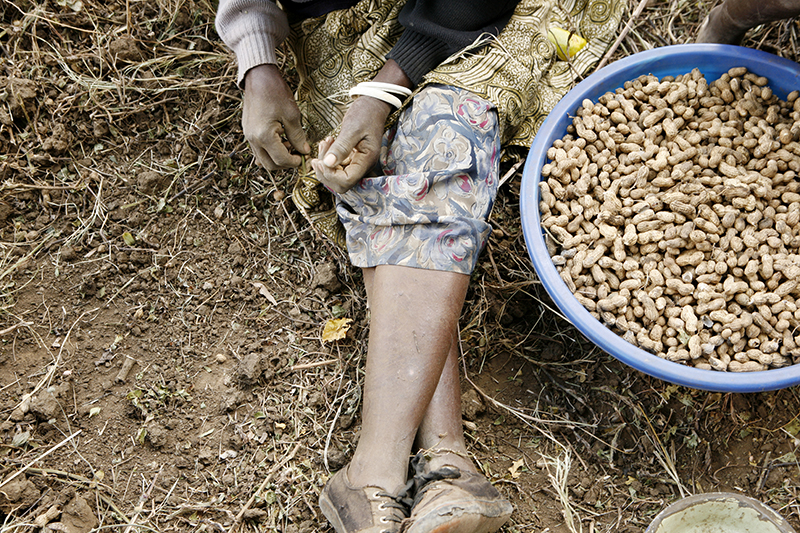
Photo Credit: Jessica Scranton/FHI 360
Despite decades of investments to improve food security for the world’s poorest people, hunger and malnutrition are still problems for many. Indeed, a daunting food security crisis currently puts more than 20 million people at risk of starvation in just four countries: Nigeria, Somalia, South Sudan and Yemen. In sub-Saharan Africa, an estimated 42 million children under the age of 5 will be malnourished by 2050, and 10 million additional children will be malnourished if climate change impacts continue unabated.
This crisis calls for improvements in identifying, understanding and addressing the interlinked factors that result in broadscale food security crises. The cycle of resource degradation caused by climate change that leads to food insecurity, starvation and ongoing conflicts raises the question of whether climate change itself is a “threat multiplier” that increases the potential for conflict. Evidence suggests that the interplay between these sectors is critical to the emergence or development of many humanitarian crises. However, the complexity of these relationships and the role of climate change as a threat multiplier are less understood.
We do know that external factors, such as poor or weak governance structures, competition between export and food commodities, and existing ethnic or community tensions, contribute to conflict and food insecurity. But, we need to understand how and when climate change plays into these as a driver. Does the migration of rural farmers to urban centers resulting from climate change drive conflict in all cases, as has been suggested in studies of the Syrian civil war? If not, what are some of the other factors?
As the world’s population approaches an estimated 9.7 billion by 2050, we must move toward a better understanding of the dynamics of food security that contribute to humanitarian crises. Building a nuanced understanding of these relationships requires innovative research approaches.
By applying new and emerging technologies and research techniques that allow for faster data gathering and analysis, organizations can rapidly collect and understand the information needed to be proactive rather than reactive. For example, refining early warning techniques and approaches using mobile phone data to track populations migrating because of drought or conflict may reveal new aspects of the climate change-food security-conflict nexus that have yet to be addressed. And, access to practical, downscaled climate and weather data that is linked to real-time information on food access and availability would allow for a better understanding of the drivers of an emerging crisis.
We must better understand how the dynamics of food security contribute to humanitarian crises. Click To TweetA community that is stable and resilient provides its residents with opportunities to grow their economy and develop multiple means of generating income, and it helps them overcome the shocks and stressors that accompany climate change, food insecurity and conflict. Communities can use resilience frameworks that consider these three issues in an interlinked or intertwined fashion and will support the identification and development of alternative livelihoods — for instance by diversifying sources of on-farm income — to improve their ability to overcome a climate of conflict-driven shocks. To increase food production, they can also use innovations such as climate-smart agriculture — defined by the Food and Agriculture Organization as “agriculture that sustainably increases productivity, enhances resilience, reduces/removes greenhouse gases where possible, and enhances achievement of national food security and development goals.” By building the research and evidence base on the relationships among climate change, food security and conflict, we can develop timely responses that allow residents of affected regions to reduce the impact of these crises.
